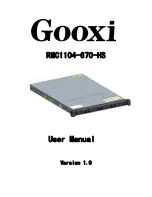
Installing a Stinger MS+
Connecting cables to a Stinger unit
Stinger® MS+ Getting Started Guide
2-3
To rack-mount a Stinger unit into an equipment cabinet:
1
Carefully raise the unit to the appropriate installation height.
2
Align the screw holes on the mounting bracket with the screw holes on the
equipment cabinet.
3
Using a number 2 Phillips screwdriver, install cross-head screws of the
appropriate size through the mount bracket on the unit into the mounting
bracket on the equipment cabinet.
Connecting cables to a Stinger unit
Once the Stinger unit is set up in the desired location, connect the unit to the local
facilities or to its frame access points by attaching the appropriate cables to the LPMs.
Connect the Stinger unit to the ATM network by attaching the copper or fiber
connections to the trunk modules.
Connecting to the LPMs
LPMs provide physical connections for the DSL lines supported by their associated
LIMs. LPMs are available with 50-pin connectors that support 24, 48, or 72 port
LIMs. An LPM is also available with 64-pin connectors that contains internal splitters
to support up to 48 ports of ADSL-over-POTS service. For specific information about
the connectors, pinouts, and cables associated with your LPMs, see the
Stinger Line
Protection Module (LPM) Guide
.
Securing the connectors
Connections to 50-pin connectors can be secured by three mechanisms shown in
Figure 2-2. It is recommended that you use these mechanisms to make the
connections as secure as possible.
■
An anchor screw on the far end of the connector can be screwed into a fitting on
the LPM. Some connectors can use anchor screws at both ends of the connector.
■
A locking tab under the cable side of the connector automatically secures the
connector upon installation.
■
A nylon cinch-tie can be used secure the cable end of the connector to a tie-down
fitting on the LPM. If the connectors you are using have a slot to accept the
connector locking tab, use of a nylon cinch-tie is optional.






































